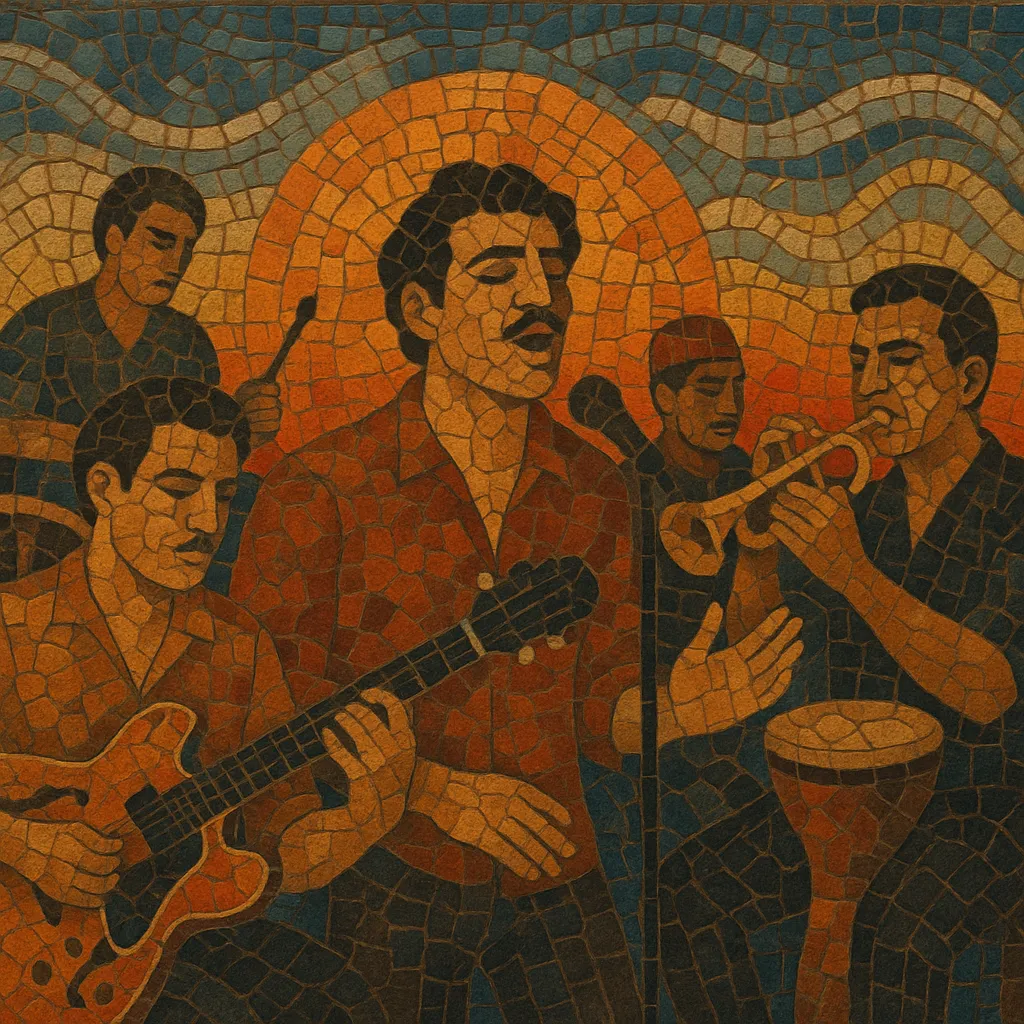Fon leb is a Lebanese strain of Arabic funk that emerged in Beirut’s cosmopolitan nightclub and studio scene during the 1970s. It blends the syncopated grooves and bass-forward feel of American funk and disco with Levantine melodic language (maqam) and Arabic percussion patterns (iqa‘at).
Arrangements typically feature electric bass, drum kit, wah‑wah guitar, analog keyboards, and brass sections, interlocking with darbuka, riqq, and handclaps. Vocals draw on melismatic Arabic phrasing, often set to catchy call‑and‑response hooks. The result is a dance‑floor‑ready sound that is both unmistakably Lebanese and globally groovy, alternating between slick instrumental “oriental funk” workouts and vocal pop songs with theatrical flair.
Lebanon’s post‑war cultural boom fostered a vibrant recording industry and nightclub circuit in Beirut. Western jazz, soul, and emerging funk sounds circulated widely through radio, visiting bands, and local orchestras. Arrangers and bandleaders began experimenting with electric rhythm sections and brass riffs, weaving them into Levantine melodies and theater songs.
By the mid‑1970s, a distinctly Lebanese take on funk had crystallized: tight rhythm sections, wah‑wah guitars, and analog synths met Arabic maqamat and iqa‘at such as maqsoum and malfuf. Studio orchestras and forward‑thinking composers cut soundtracks, belly‑dance disco LPs, and radio singles that married nightclub energy with Arabic songcraft. Despite political turmoil, the studio scene produced enduring recordings that later became sought‑after by global diggers.
Through the 1980s, the sound diversified into jazz‑funk, disco‑pop, and TV/film music while retaining its core groove aesthetic. In the 2000s–2020s, reissue labels and DJs worldwide revived interest in Lebanese "oriental funk," inspiring new producers to sample, rework, and perform the style live. Contemporary Lebanese acts occasionally reference these grooves, keeping the fon leb spirit alive across retro‑minded disco, indie, and hip‑hop contexts.


